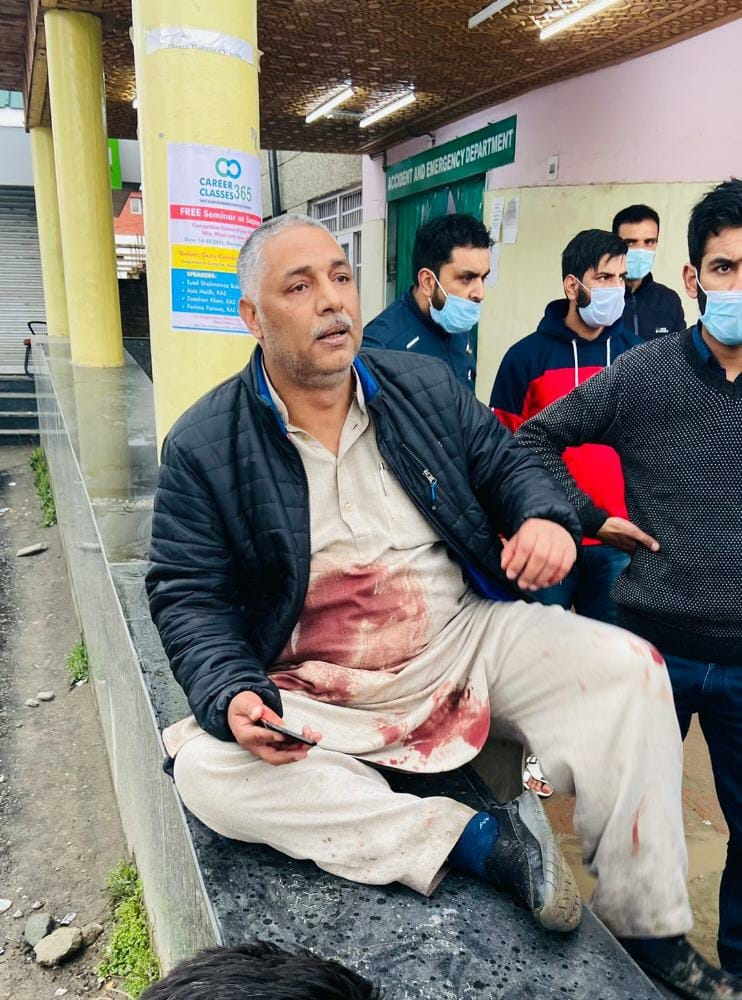The terrorist killings of two councillors of the Sopore Municipal Council and a Special Police Officer (SPO) in Sopore on Monday has made it clear that the chain of political killings is continuing in Kashmir.
The Resistance Front (TRF), which according to the Police and security forces, is a front for the Pakistan-based jihadist outfit Lashkar-e-Tayyiba, claimed responsibility for the attacks. The Sopore strike is the first terror strike after the recent agreement over the truce on the LoC and the International Border between India and Pakistan in Jammu and Kashmir and a thaw in relations between the two countries.
The police and security forces had not made any security arrangement to protect the vulnerable councillors at Sopore who have contested elections in defiance of the terrorist diktats and strengthened the Indian democratic system and polity in Jammu and Kashmir.
Senior Congress leader Ghulam Rasool Kar’s daughter, Massarat, who is a protected councillor, had written a letter to Executive Officer Sameer Ahmad on 26 March, seeking necessary security arrangements for the meeting venue on 29 March. The Police and the security forces did not perceive any threat to the councillors, mainly because of the exchange of positive notes between New Delhi and Islamabad since 26 February 2021.
The meeting started as usual in the meeting hall of Sopore Municipal Council on the first floor of a commercial complex belonging to the slain Peoples Democratic Party (PDP) Minister Dr Ghulam Nabi Lone’s family near Sub District Hospital on Sopore-Kupwara Road. The complex is highly vulnerable to a terrorist attack. It has a large number of shops, private business offices, pharmacies and clinics on its three floors.
According to the Executive Officer, one unidentified gunman was spotted firing on the councillors when 18 of them were in the 21st minute of the meeting. Independent councillors Riyaz Ahmad Peer and his father-in-law/maternal uncle Shamsuddin Peer were fatally hit. One died on the spot and another on Tuesday at the hospital. With this, a lady councillor lost her husband as well as her father.
One PSO of Massarat Kar rushed upstairs but he too was gunned down before the attackers made good their escape.
TRF referred to the slain councillors as “RSS henchmen masquerading as councillors” to justify its attack on non-combatant civilians and the peoples’ elected representatives. Neither of them though had joined the BJP or RSS.
“The Resistance Front today carried out an operation in Sopore against RSS henchmen masquerading as councillors. These collaborators who have sold their soul to RSS were busy slaving (sic.) to implement the Grand Schemes of their RSS Masters when their evil designs were brought to an abrupt end. Despite the fact that people from all over Kashmir are constantly asking us to take a much harsher approach towards these moles and collaborators, The Resistance Front is giving all chances to these misguided and brain dead who have sold their soul to the devil for a paltry sum and that is why our attack was very calibrated and designed for minimum casualties”, said a statement purportedly issued on TRF’s letter head.
Significantly, however, none of the members or chairpersons of ULBs, BDCs or District Development Councils (DDCs) has resigned immediately out of fear as witnessed after many such terror strikes in the past.
Even as the cult of the funeral processions, gun salutes to the slain militants, intense stone pelting and mob attacks on the police and security forces during the cordon-and-search operations have subsided after August 2019, armed attacks on the grass-root public representatives and mainstream political activists have increased. There were a spate of such political killings between June and October 2020.
Meanwhile, IGP Kashmir Vijay Kumar on Tuesday held a meeting of Kashmir’s DIGs and SPs through video conferencing and issued necessary instructions to put in place all preventive and surveillance equipment including drones. He ordered fresh Standard Operating Procedures in such attacks according to new emerging threat perceptions.




















